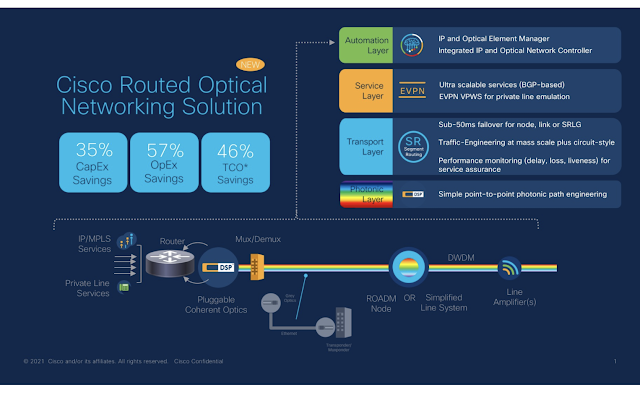LF Networking (LFN) announced the ONAP Honolulu release -- the eighth distribution of the Open Network Automation Platform
ONAP Honolulu highlights:
- More Cloud Native Functionality. Honolulu brings cloud native functionality with seamless configuration of Helm based CNFs and K8s resources. This new functionality includes health checks and is implemented in the Controller Design Studio (CDS) and MutliCloud projects. An ONAP cloud native task force meets regularly to explore deeper cloud native integrations.
- Deeper 5G Support. Honolulu contains new functionality around end-to-end 5G network slicing, including three components for RAN, core, and transport domains.
- Robust ORAN Integration. Increased support for the O-RAN A1 standard implemented in ONAP's CCSDK and SDN-C projects enables flexibility for RAN operators to manage wide area RAN network optimization, reducing capex investment needs. Further integration improves integration with both O-RAN and 3GPP.
- Expanded Modularity & Functionality. Modularity has been an important topic in ONAP to allow users to pick and choose the components they need for their specific use case and Honolulu continues to advance modularity. The Honolulu release also includes new functionality such as new and simplified microservice and KPI deployments; easier validation that improves compliance with 3GPP and O-RAN; OOM now supports IPv4 and IPv6 for all components; SDC includes increased support for ETSI standards; and the CCVPN use case blueprint now supports 3+ network domains (increased from 2).
- New Enterprise Use Case. While ONAP has primarily been used by Communication Service Providers (CSPs), the project also recognizes the value of ONAP in the enterprise and the community has started a new ONAP for Enterprise Work Group. The group welcomes participation from new contributors that want to expand the applicability of ONAP.
LF Networking also announced the new 5G Super Blueprint, which works end-to-end across the open source 5G stack enabling easier deployments and automation with Magma 5G Core, ORAN SC, LF Edge Akraino.
"ONAP is an integral component of the 5G Super Blueprint, bringing automation and other management and orchestration capabilities to the end-to-end 5G infrastructure," said Arpit Joshipura, general manager, Networking, Edge, and IoT, the Linux Foundation. "The Honolulu release—which really brings robust cloud native capabilities to the forefront—coincides with collaborative efforts across open source communities to deliver more scalable, deployable networks across 5G, carrier Wi-Fi, private LTE, and more."
"From its birth, ONAP has been positioned as a critical Network Automation Platform, continuously growing its 5G footprint and Cloud Native capabilities while playing an active role in CSPs' RAN virtualization journey", said Catherine Lefèvre, ONAP TSC Chair. "In addition to our 5G features and O-RAN integration activities, our latest release, Honolulu, is extending Network Slicing functions to support RAN, Core, and Transport domains. Additionally, this release also introduces the concept of best practices and global requirements (design patterns applicable to the whole code base) to ensure we keep enhancing platform robustness. ONAP will remain an important agent of change this year by expanding its scope to include functionalities for Enterprise Customers and Vertical Markets, while enhancing its modularity to enable lightweight packaging tailored to specific use cases."
The next ONAP release, 'Istanbul,' is planned for 2H of 2021.




















